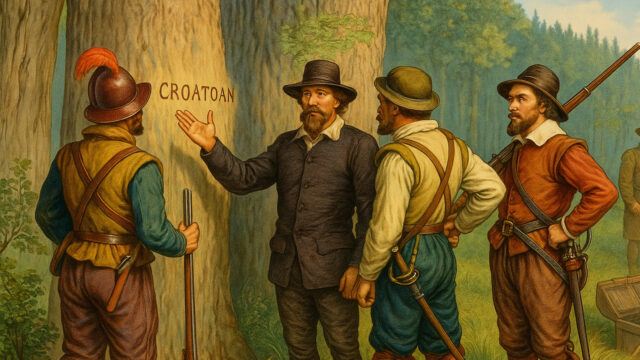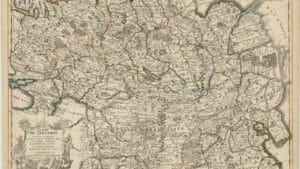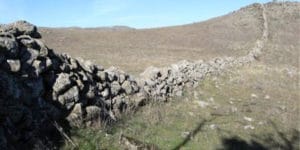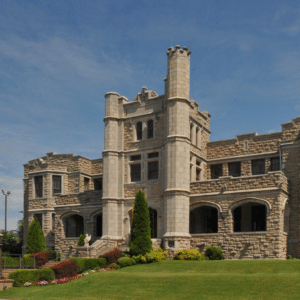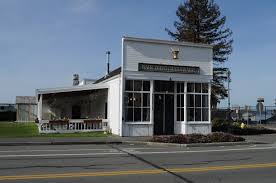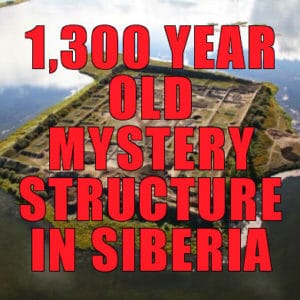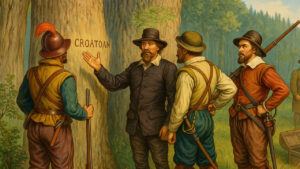
What happened to the 118 settlers of Roanoke Island who vanished without a trace in the late 1580s?
For over four centuries, the mystery of America’s “Lost Colony” has haunted historians, archaeologists, and storytellers. Was it disease, starvation, or a violent end? Or did these early English colonists simply blend into the New World in a way no one expected? Recent archaeological discoveries may finally hold the key to this enduring enigma. Join our newsletter at ParaRational.com to dive deeper into mysteries like this!
The Mystery of Roanoke: A Brief History
In 1587, a group of over 100 English men, women, and children, led by Governor John White, landed on Roanoke Island, off present-day North Carolina. Backed by Queen Elizabeth I and explorer Sir Walter Raleigh, they aimed to establish England’s first permanent colony in the New World. Among them was White’s daughter, Eleanor Dare, who gave birth to Virginia Dare—the first English child born in America.
Life was tough. The colonists struggled with scarce food and tense relations with some local tribes. White sailed back to England for supplies, but the Anglo-Spanish War delayed his return until 1590. When he arrived on his granddaughter’s third birthday, the colony was gone. No bodies, no signs of struggle—just the word “CROATOAN” carved into a fort’s gatepost and “CRO” etched into a tree. Croatoan was the name of a nearby island (now Hatteras) and its native tribe, leading to speculation that the settlers moved there.
For centuries, theories swirled. Were the colonists killed by natives or Spanish raiders? Did they starve or succumb to disease? Or did they assimilate with local tribes, their English roots fading into history? The mystery inspired books, movies, and even a long-running play on Roanoke Island, keeping the tale alive in American folklore.
Never Miss A Paranormal Story!
Newsletter subscribers get insider access to the latest paranormal posts!
Your email is safe with us and you can unsubscribe at any time!
New Evidence Uncovered
In May 2025, archaeologists Mark Horton and Scott Dawson announced a breakthrough after over a decade of digging on Hatteras Island. Their team, from the Croatoan Archaeological Society, uncovered tiny flakes of rusted metal called hammerscales—byproducts of forging tools or weapons. These were found in Buxton, Hatteras, alongside lead shot, suggesting 16th-century English activity. Unlike coins or swords, which could arrive through trade, hammerscales are strong evidence of settlers working metal on-site.
Horton calls these finds the “smoking gun” of what happened to the Roanoke colonists. Historical records note friendly ties between the settlers and the Croatoan tribe, and the lack of distress signals at the abandoned Roanoke site supports the idea of a voluntary move. Dawson believes the colonists, facing food shortages, relocated to Hatteras between 1587 and 1590 to join the Croatoans, with whom they had good relations.
Examining Evidence Against the Hatteras Assimilation Theory
The Hatteras Island finds, like hammerscales and lead shot, suggest the Roanoke colonists joined the Croatoan tribe. But several clues make this theory less certain, keeping the mystery alive.
First, those tiny metal flakes could come from later European traders, not the 1587 settlers. Without clear Roanoke-specific items, like English pottery or tools, the evidence isn’t rock-solid.
Also, the colonists had rocky relations with some tribes, like the Secotan, after a deadly 1586 clash. This bad blood could have led to an attack, not a friendly move to Hatteras.
Strangely, neither Croatoan stories nor English records mention the settlers living among them. If 118 people joined the tribe, you’d expect some trace of them.
Other sites tell a different story. Digs at Site X, near the Chowan River on the mainland, found English pottery and a signet ring, hinting that some colonists went inland instead.
Additionally, moving everyone 50 miles to Hatteras through stormy seas during a harsh drought sounds tough, too.
Maybe the group scattered—some to Hatteras, others inland, or even lost to starvation or conflict. These gaps suggest the “Lost Colony” might not have a single, tidy ending.
Revised “What This Means for the Mystery” Section
The Hatteras discoveries could change how we see the Roanoke story. Hammerscales and lead shot suggest the colonists didn’t meet a grim end but moved to Hatteras, likely joining the Croatoan tribe. This paints a hopeful picture of survival and teamwork in a tough new world, challenging old tales of massacre or starvation.
But the mystery isn’t solved yet. Why didn’t the colonists leave a clearer message for John White? If they blended with the Croatoans, where are their descendants’ stories? And if they relocated, why didn’t White find them in 1590? Other clues, like pottery at Site X, hint that some settlers went inland, not to Hatteras. Maybe the group split up—some to Hatteras, others elsewhere, or lost to hunger or attack.
These finds spark new questions and research, like DNA tests on modern Hatteras locals. For now, the “Lost Colony” might not be lost—just scattered and waiting for more answers. What’s your take on Roanoke’s fate?
Share your ideas in the comments or email your own spooky stories to Reports@ParaRational.com.

